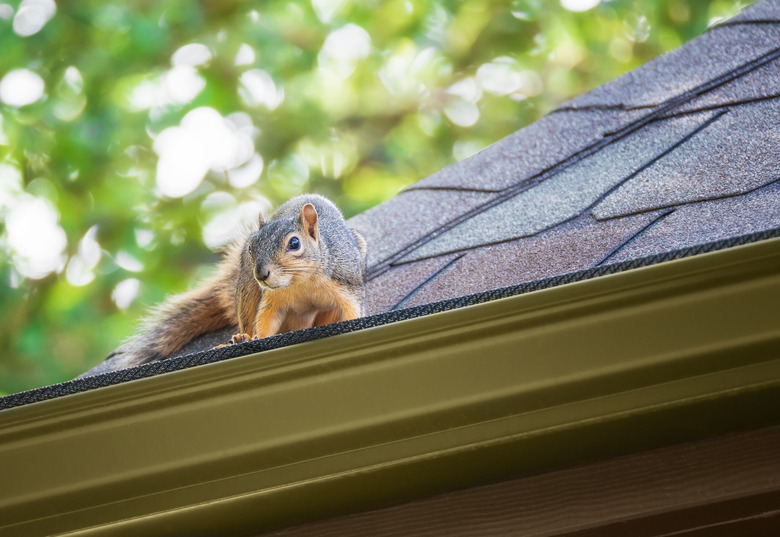How To Get Rid Of Squirrels In The Walls
We may receive a commission on purchases made from links.
Is there something squirrelly happening in your walls? To get rid of squirrels in your walls or attic, the safest way is to hire a wildlife removal company that offers humane removal options. Resolving the issue quickly prevents more damage to your home and lets you go back to your rodent-free way of life.
How Squirrels Get In
How Squirrels Get In
It only takes a hole about the size of a baseball for a squirrel to make its way inside your home. They can often get in through damaged fascia boards and shingles, gaps around vents, and other holes around your home's exterior. They can also chew through lots of materials, including shingles and roofing. Once inside, they have a warm, protected place to nest.
Signs of a Squirrel Infestation
Signs of a Squirrel Infestation
Squirrels most often nest in attics, but they can get into wall cavities too. These rodents aren't quiet when they do get in either. You might hear scampering, jumping, and scratching noises. You might also see squirrel droppings in your attic, chew damage, or stains on your ceilings and walls from squirrel urine and feces.
You can hear some of the same sounds if you have mice or rats. However, rats and mice are nocturnal, so you'll mainly hear the sounds at night. With squirrels, you'll hear the most activity in the morning and evening. During the day, they typically go forage for food, and you won't usually hear them at night.
Humane Removal Methods
Humane Removal Methods
The best option for removing squirrels is finding a company that uses humane pest control to evict them. Never try to handle squirrels yourself as they can become very aggressive and bite if they're cornered. Professionals have the tools to remove squirrels humanely and know how to handle wildlife safely. Live traps are one option for removing squirrels from your home, and the wildlife removal specialist can then relocate the squirrels.
Another option is installing a temporary one-way exclusion door over the entry point. When the squirrel leaves to look for food, it can't get back in because the door only opens one way. This is only an option if you know there aren't baby squirrels in your home, though. If the adult squirrel gets locked out, the baby squirrels will likely die in your home.
Excluding More Squirrels
Excluding More Squirrels
Getting rid of your current squirrel residents doesn't prevent future squirrelly roommates from moving in. Taking steps to keep squirrels off your roof can reduce the risk of future squirrel infestations. Trim all tree branches within 6 feet of your roof as squirrels can easily jump to the roof.
Look for possible entry points, especially damage to your home. One way to check for holes you can't see is to shine a flashlight on various parts along the roofline to see if an assistant can see light coming into the attic. You can also do the reverse, shining a light toward corners and seams inside the attic at night to see if an assistant outdoors can see the light.
Seal cracks, gaps, and holes you spot during your inspection. Replace damaged fascia boards, shingles, and roofing to limit access to your home. Use hardware cloth inside your home to cover openings for attic vents and similar features.
